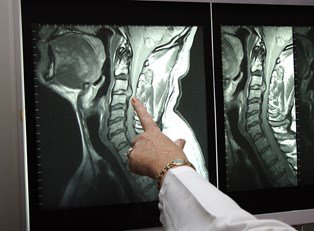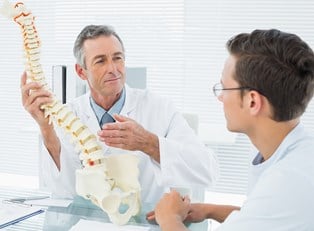The spine consists of a series of individual bones referred to as ‘vertebrae’ that are stacked in order to form the spinal column. Between each vertebra is a round, flat cushioning pad known as an intervertebral disc, which works to absorb shock. A herniated disc, which is also referred to as a ruptured or slipped disc, typically occurs when undue pressure is placed on the vertebrae. If the herniated disc presses on any nerves close to the disc, the result can be painful.
Herniated discs generally take place in the lower half of the spine. However, they’ve also been known to occur in the thoracic and cervical spine. A herniated disc is notorious for causing back, neck, and leg pain, which is known as sciatica.
Prevention
While it’s not always possible to actually prevent a herniated disc, there are various steps to take in order to greatly reduce the risk:
- Practice appropriate lifting techniques. Never bend at the waist. Instead, bend at the knees while keeping the back aligned and using the stronger leg muscles to carry the burden of the load.
- Pack light. Children who continuously carry heavy backpacks generally experience more back problems, and can eventually lead to a herniated disc.
- Try to practice good posture whenever you are walking, standing, sitting, or even sleeping. For instance, stand completely straight with shoulders back, the small of the back flat, and the abdomen in. Always sit with your feet flat to the floor or somewhat elevated. Sleep on your side, rather than your stomach, on a fairly firm mattress.
- Refrain from wearing high-heeled shoes.
- Maintain a healthy weight. Too much weight puts undue pressure on the lower back.
- Eat well-balanced, nutritious meals.
- Stop smoking and watch your alcohol intake.
- Stretch quite frequently if sitting for extended periods of time.
- Exercise on a regular basis in order to keep the muscles in your back, stomach, and legs strong and flexible. If possible, engage in aerobic exercise regularly.
Sedentary Connections
Individuals who engage in a more sedentary lifestyle face a higher risk of low back pain, or a herniated disc. This is particularly true if they try to do physically taxing chores that include moving bulky items, shoveling snow, or certain tasks that call for bending over excessively. Even though there aren't any documented studies that actually prove the correlation between lower back pain and a lack of exercise, many doctors think an inactive lifestyle is a big contributor to back pain or in some cases, herniation.
Refrain from sitting for long periods of time. People who travel in vehicles or sit in front of a computer all day increase their chances of disc problems. Avoid carrying or lifting heavy objects immediately after sitting for an extended amount of time.



